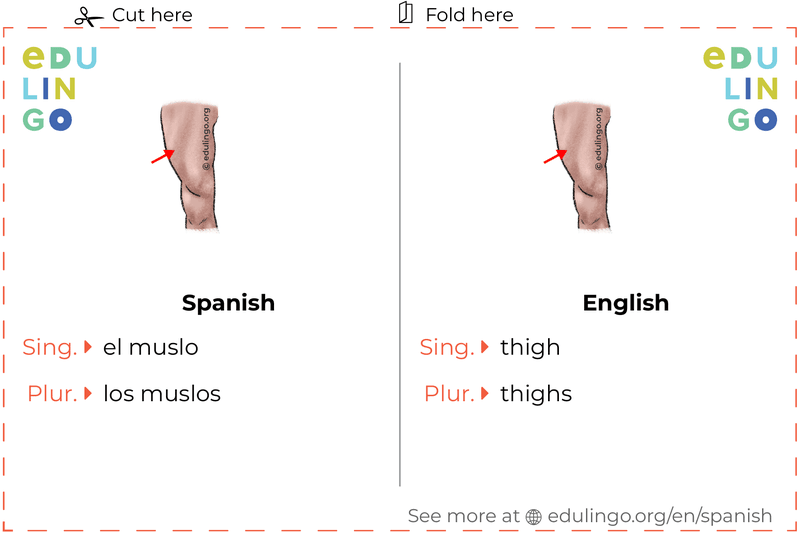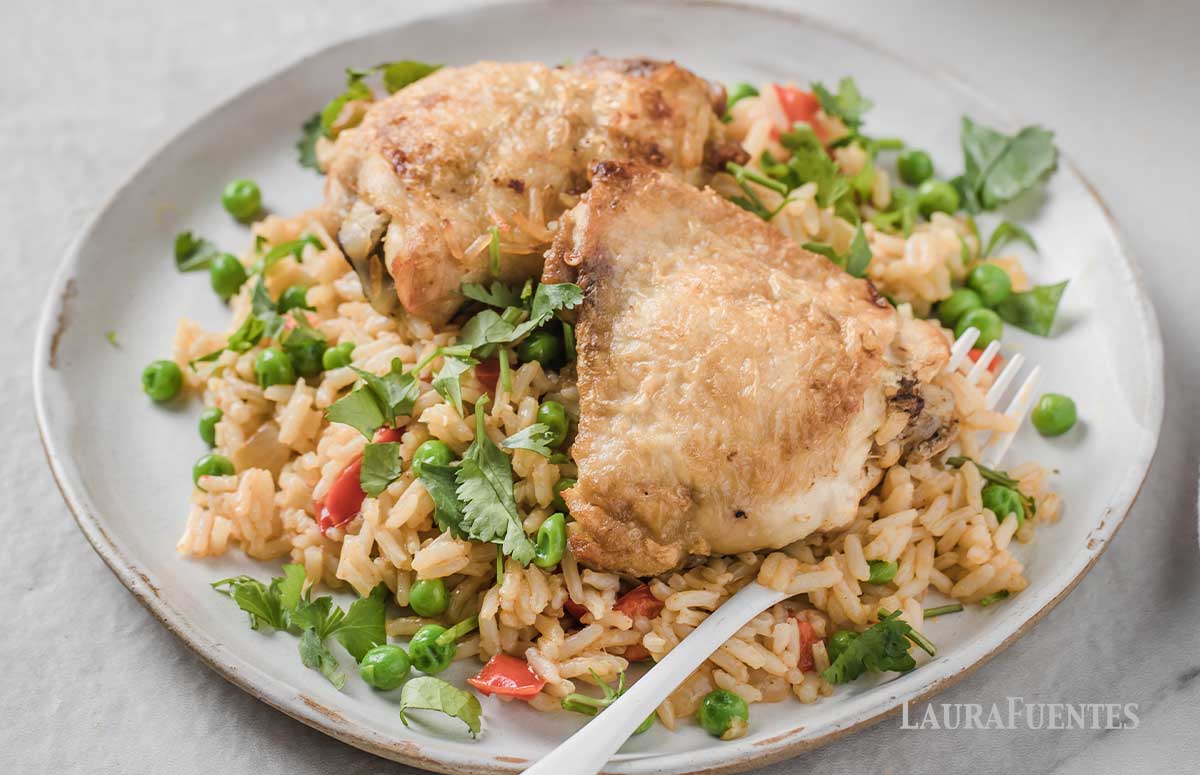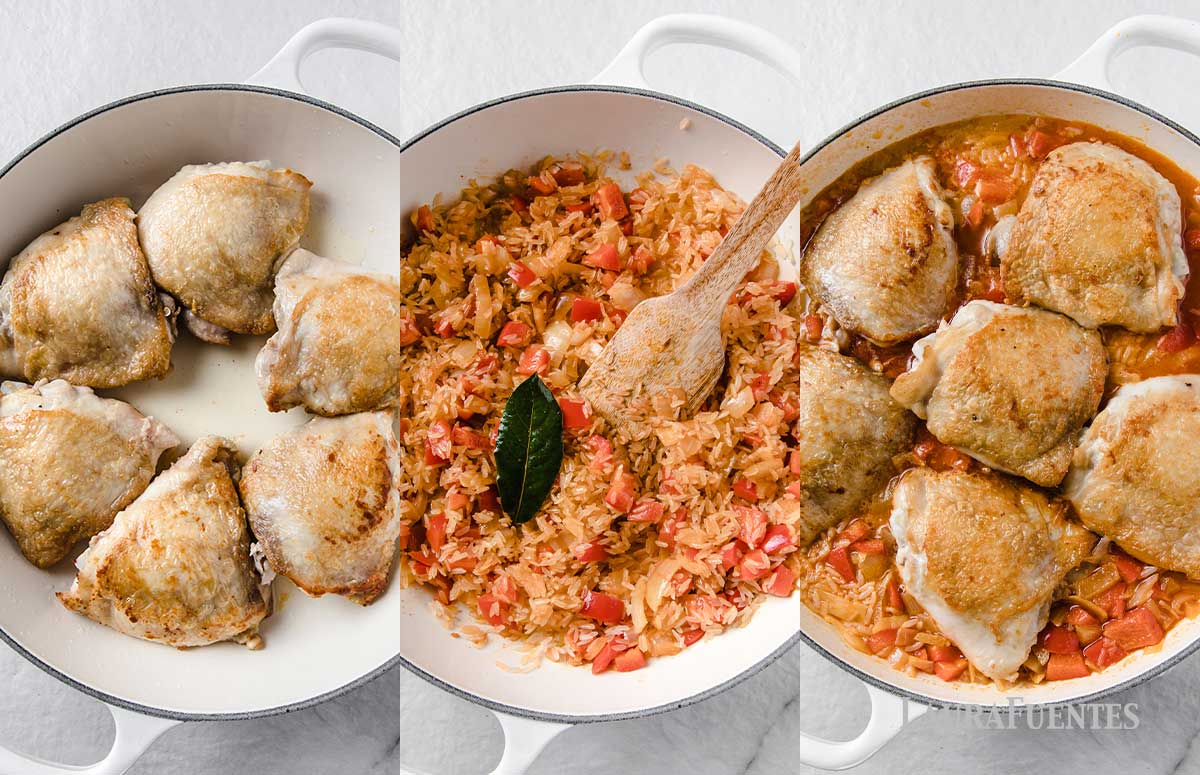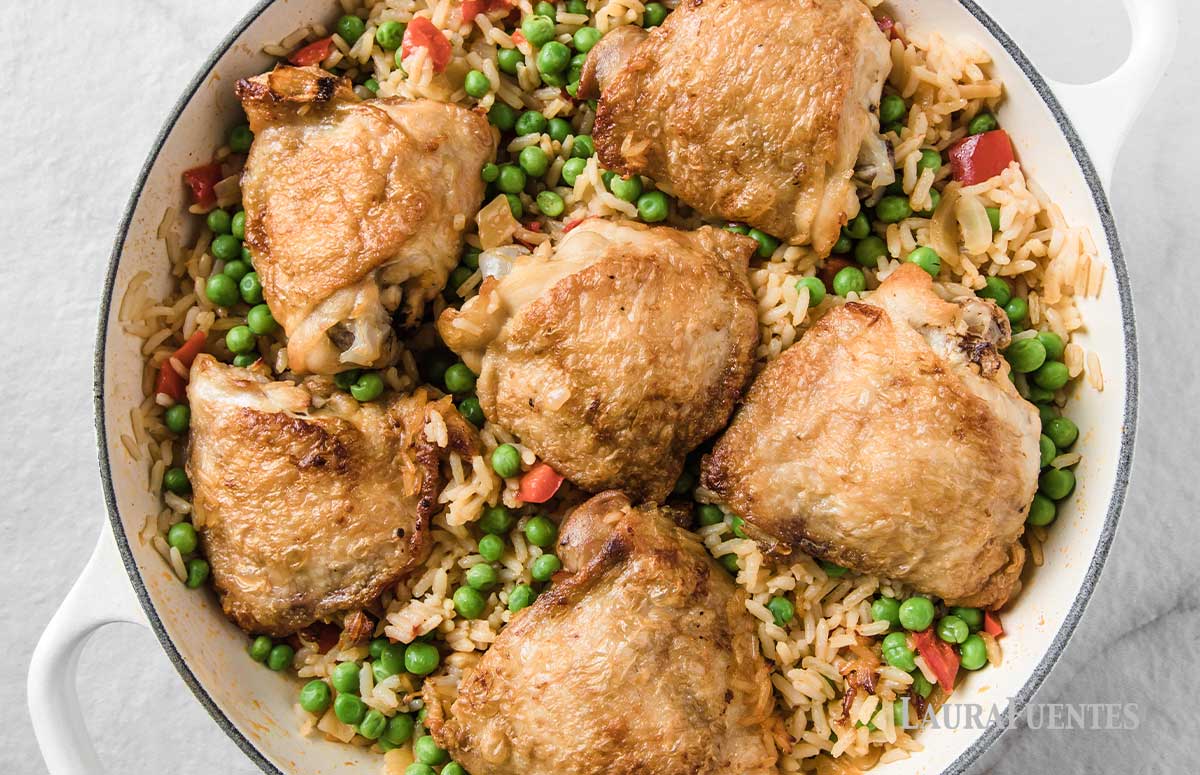When you’re exploring Spanish cuisine or trying to order your favorite poultry cut at a Spanish restaurant, knowing the right terminology is key. So, how do you say “chicken thigh” in Spanish? The direct and widely accepted translation is “muslo de pollo”.
This simple phrase will get you understood across the entire Spanish-speaking world whether you’re shopping at a local market in Barcelona or following a recipe from Mexico.
As someone who loves cooking international dishes, I’ve learned that understanding food terminology in different languages opens up a whole new culinary world. Let’s dive deeper into this specific Spanish food term and explore all the nuances!
The Basic Translation: Muslo de Pollo
“Muslo de pollo” is the standard universally accepted Spanish term for chicken thigh. Let’s break it down
- Muslo = Thigh
- de = of
- Pollo = Chicken
The pronunciation is roughly: “MOOS-lo deh POH-yoh”
This translation is recognized throughout Spain, Mexico, and all Latin American countries, making it your go-to phrase when looking for this specific cut of chicken.
Understanding Chicken Anatomy in Spanish
Before we go further, it’s helpful to know some basic chicken anatomy terms in Spanish. This will help you navigate menus and butcher shops more confidently
| English Term | Spanish Translation |
|---|---|
| Chicken | Pollo |
| Breast | Pechuga |
| Wing | Ala |
| Leg | Pata |
| Thigh | Muslo |
| Drumstick | Contramuslo |
| Quarter chicken | Cuarto trasero |
Common Questions About Chicken Thighs in Spanish
Is “pata de pollo” the same as “muslo de pollo”?
No! This is a common confusion. “Pata de pollo” literally translates to “chicken foot,” but in some regions, it might refer to the entire leg. For clarity, always use “muslo de pollo” when specifically referring to the thigh.
How do I specify bone-in or boneless chicken thighs?
This is super important when following recipes! Here’s how to specify:
- Bone-in chicken thighs: “Muslo de pollo con hueso”
- Boneless chicken thighs: “Muslo de pollo deshuesado” or “Muslo de pollo sin hueso”
What about skinless chicken thighs?
If you need skinless chicken thighs, ask for “muslo de pollo sin piel.” The word “piel” means skin in Spanish.
Ordering Chicken Thighs in Spanish-Speaking Countries
When I visited Spain last year, I wanted to buy some chicken thighs for a paella I was making. Here’s a simple phrase that worked perfectly:
“Quisiera dos muslos de pollo, por favor.” (I would like two chicken thighs, please.)
If you need to specify further, you can add:
- “Con hueso” (with bone)
- “Sin hueso” (boneless)
- “Sin piel” (skinless)
Muslo vs. Pierna: An Important Distinction
A common confusion arises between “muslo” and “pierna” when talking about chicken parts. Here’s the difference:
- Muslo specifically refers to the thigh portion
- Pierna refers to the entire leg, from thigh to foot
If you only want the thigh part, make sure to specifically ask for “muslo.”
Regional Variations and Slang
While “muslo de pollo” is the standard term understood everywhere, there are sometimes regional variations. However, unlike many other food items, chicken thighs don’t have widespread alternative names across Spanish-speaking regions.
The term “muslitos” (small thighs) is sometimes used, particularly when referring to smaller portions or when cooking for children. This is simply the diminutive form of “muslos.”
Popular Spanish Dishes Using Chicken Thighs
Chicken thighs are incredibly versatile in Spanish and Latin American cooking. Here are some popular dishes that feature this cut:
- Pollo al ajillo – Chicken with garlic
- Muslos de pollo asados – Roasted chicken thighs
- Arroz con pollo – Chicken and rice (often uses thighs for more flavor)
- Muslos de pollo a la parrilla – Grilled chicken thighs
Other Helpful Terms When Cooking with Chicken Thighs
If you’re following Spanish recipes or discussing chicken dishes, these additional terms might come in handy:
- Dark meat chicken: “Carne oscura de pollo”
- Chicken drumstick: “Contramuslo de pollo”
- Quarter chicken: “Cuarto trasero” (includes both thigh and drumstick)
Why Chicken Thighs Are Popular in Spanish Cuisine
Spanish cuisine often favors chicken thighs over breast meat for several reasons:
- More flavor: The higher fat content makes thighs more flavorful
- Moisture retention: Thighs stay juicier during cooking
- Cost-effective: They’re usually cheaper than breast meat
- Versatility: They work well in stews, grills, and roasts
Common Mistakes to Avoid
When talking about chicken thighs in Spanish, avoid these common errors:
- Using “cadera de pollo” – While “cadera” means hip, this term is not commonly used for chicken thighs
- Confusing “pata” and “muslo” – Remember, “pata” refers to the whole leg
- Asking for “pierna” when you only want the thigh – You might get more than you bargained for!
Final Thoughts
Learning food terminology in different languages expands our culinary horizons and helps us appreciate global cuisine. “Muslo de pollo” is a straightforward translation that’ll serve you well throughout the Spanish-speaking world.
Whether you’re ordering at a restaurant, shopping at a market, or following a Spanish recipe, you now know exactly how to refer to chicken thighs in Spanish!
So next time you’re making your favorite Spanish dish, you can confidently ask for “muslos de pollo” and know you’re getting exactly what you need. ¡Buen provecho! (Enjoy your meal!)
Do you have any favorite chicken thigh recipes from Spanish or Latin American cuisine? I’d love to hear about them in the comments below!

Authentic Spanish Chicken and Rice
The flavors of this recipe are as close to what I remember from my childhood and bring back happy memories of my grandfather and his back-yard chickens and my grandmother cooking Valencia rice with aromatic spices in the kitchen. You could taste the quality of the ingredients in every bite.
In this simple recipe for Spanish chicken and rice, I used chicken thighs cooked over saffron rice; yielding a fragrant, delicious, one skillet meal. By the way, this Basque chicken is another epic Spanish recipe you’ll want to try!

Don’t worry if the ingredient list looks a little long: all you need is chicken, rice, some veggies, and seasonings. That’s all! You’ll find the measurements below, but first, check what you need:
- Olive oil: for cooking.
- Chicken thighs: some recipes call for bone-in thighs with the skin removed, but I prefer to keep the skin-on, it helps to lock in moisture and keep the meat moist.
- Onion: a delicious base for all kinds of skillet meals!
- Bell pepper: you can use red, yellow, or green bell peppers.
- Garlic: fresh garlic cloves minced or garlic paste for tons of flavor!
- Saffron: you can order it on Amazon, or if you’re in a pinch, use smoked paprika instead.
- Salt: for seasoning.
- Leaf bay: adds more flavor. It’s optional!
- Rice: I use long-grain white rice. For a low-carb swap, use cauliflower rice instead; just keep in mind the cooking time will be shorter.
- Chicken broth: the liquid this recipe needs. You can also use vegetable broth, chicken stock, or even water.
- Frozen peas: the last veggie you’ll add to this epic Spanish chicken and rice. No need to thaw them!

To bring this dish up a notch, I seasoned the rice with saffron. But don’t worry, if you don’t have saffron, I offer a replacement that will also add lots of flavor in the recipe card below. I can’t help it! I’m from Spain and paella is a way of life! But that’s another recipe for another day.
For anyonewho is not familiar with saffron, it’s a threadlike spice harvested fromflowers. It has a sweet, floral scent and gives a beautiful yellow hue whencooked with rice, couscous, and grains. It’s also one of the most widely usedspices in the Mediterranean and Middle East.
Searing the chicken in the same pot leaves small tidbits of flavor that will add additional seasoning to this dish. And the bone-in makes each chicken piece tender and juicy.

Why This Spanish Chicken and Rice Recipe is the BEST!
Whileit tastes expert status, this is an easy weeknight meal made with simpleingredients.
If you wanted to make this low-carb, you could swap the rice for cauliflower rice, this would drastically cut down on the cooking time, but you would get an EPIC meal that’s Whole 30 approved and keto-friendly.

